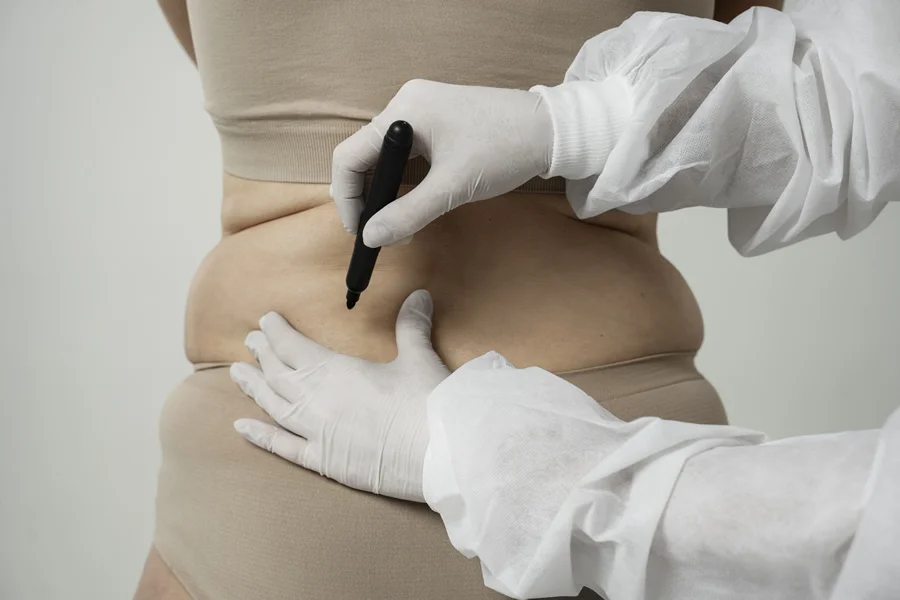Op. Dr. Burkay Akduman
Liposuction Recovery Guide
Liposuction is a popular cosmetic procedure designed to target stubborn fat deposits and create a slimmer, more sculpted body shape. While the results can be life-changing, it’s important to know what to expect during the recovery process. Understanding the healing stages, potential side effects, and how to care for your body after the procedure will …
Liposuction is a popular cosmetic procedure designed to target stubborn fat deposits and create a slimmer, more sculpted body shape. While the results can be life-changing, it’s important to know what to expect during the recovery process. Understanding the healing stages, potential side effects, and how to care for your body after the procedure will help ensure a smoother recovery. So, what should you expect after liposuction? Let’s dive into the recovery process and the key factors you need to know.
1. The First Few Hours and Days
After liposuction, you may need to stay at the clinic or hospital for a few hours, depending on the extent of the surgery. Once the anesthesia wears off, you’ll be monitored by the medical team. During the first few hours, you may feel groggy or tired as your body recovers from the sedation.
In the first few days, swelling, bruising, and mild discomfort are common. Your surgeon may prescribe pain medications to manage any pain. While you’ll likely be able to return home the same day, it’s important to rest and follow your doctor’s advice for post-operative care.
Swelling and Bruising: Swelling and bruising are normal after liposuction. These side effects may take several days to subside and can last up to a few weeks. As your body heals, you’ll notice a gradual reduction in swelling, revealing your new body contours.
2. Compression Garment
After liposuction, your surgeon will likely recommend wearing a compression garment to help reduce swelling and support the healing process. This garment should be worn for several weeks, depending on your surgeon’s instructions. The compression garment helps shape the treated areas, encourages skin contraction, and reduces the risk of fluid buildup.
How It Helps: Wearing the compression garment is essential for optimizing results and ensuring smooth healing. It also reduces the chances of complications such as seromas (fluid collections) and helps in contouring the body more effectively.
3. Pain and Discomfort
It’s normal to experience some discomfort after liposuction, but the pain should be manageable with prescribed medications. You may feel sore or tender around the treated areas, and there may be some tightness or numbness in certain regions.
Managing Pain: Pain is typically at its worst during the first few days after surgery. Over-the-counter painkillers or prescription medications will help ease any discomfort. Most patients are able to resume normal activities within one to two weeks, but strenuous activities should be avoided for at least 4 to 6 weeks.
4. Activity Restrictions
For the first few weeks following liposuction, it’s important to take things easy. Avoid strenuous activities like heavy lifting, exercise, or anything that puts strain on the treated areas. Walking is usually encouraged shortly after surgery to promote circulation and reduce the risk of blood clots, but more intense exercises should be postponed until your surgeon gives the green light.
Gradual Return to Exercise: As your body heals, your surgeon will provide a timeline for when you can resume normal activities. Typically, you can return to light exercises after two to four weeks and more intense workouts after six to eight weeks.
5. Results and Final Outcome
One of the most exciting aspects of liposuction is seeing the transformation in your body shape. While you may notice some initial changes right after surgery, the full results take time to become apparent. Swelling can take several weeks to fully subside, and it may take up to 6 months for the final results to be visible as the skin continues to adjust to its new shape.
Long-Term Results: The fat cells that are removed during liposuction are gone for good. However, it’s important to maintain a healthy lifestyle, including a balanced diet and regular exercise, to prevent new fat from accumulating in the treated areas. Liposuction can provide lasting results as long as you keep a stable weight.
6. Potential Risks and Complications
As with any surgical procedure, there are some risks associated with liposuction. While rare, complications can occur, such as infection, changes in skin sensation, irregular contours, or fluid retention. It’s important to follow your surgeon’s post-operative instructions closely to minimize these risks.
When to Seek Medical Attention: If you experience excessive swelling, fever, unusual pain, or other concerning symptoms, contact your surgeon immediately.
7. Psychological Effects
It’s natural to feel excited about your new look after liposuction, but it’s also important to be prepared for the emotional aspects of recovery. Some patients experience temporary mood changes or feel frustrated with the recovery process, especially during the initial stages when swelling and bruising are still prominent.
Stay Positive: It’s essential to have realistic expectations and understand that the final results may take several months to be fully visible. Stay in touch with your surgeon throughout the recovery process for guidance and reassurance.
Liposuction is a highly effective way to achieve a more sculpted body, but understanding the recovery process is crucial for a smooth healing journey. By managing pain, following activity restrictions, and wearing a compression garment, you can ensure the best possible results. Be patient as your body heals, and remember that your surgeon is there to guide you every step of the way. With time, you’ll enjoy the transformation and feel more confident in your body.
